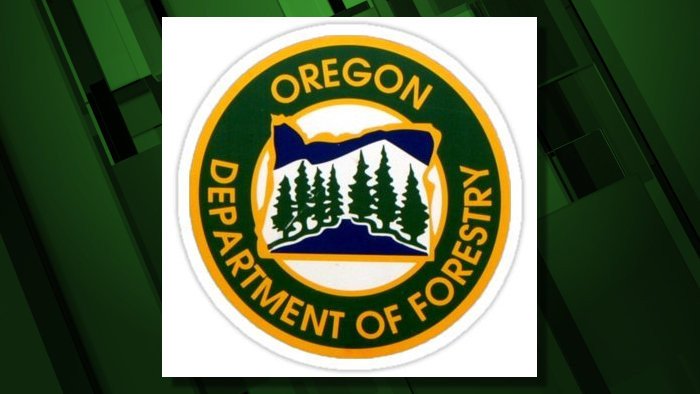ODF awards $14 million in grants to help protect water, reduce wildfire risk

SALEM, Ore. (KTVZ) — The Oregon Department of Forestry and its local, state, and federal partners have started implementing the 20-year Landscape Resiliency Strategy. The strategy prioritizes areas at high risk for wildfires.
This year through mid-2025, the three programs paid for by the state’s General Fund will invest about $14 million into local, state, federal, and private partners’ projects. The investment will expedite work on over 100,000 acres. The partners will implement these landscape resiliency strategy projects to improve forest health and reduce wildfire risk.
As 2024 continues, ODF builds on prior investments. This means leading partner work to reduce wildfire risk, which includes creating wildfire buffers around communities in the wildland-urban interface or WUI. To do some of this work ODF has 13 programs that leverage 27 funding sources. The three state-funded programs are the Landscape Resiliency Program, Small Forestland Grant Program, and Federal Forest Restoration (FFR) Program.
“The state’s leaders have seen how strategic forestry investments can leverage state funds to reduce wildfire risk, bolster the economy, and protect water sources,” said State Forester Cal Mukumoto. “Thoughtful planning makes this happen; that’s what ODF does. Today we’re highlighting some strategic investment vehicles — the Landscape Resiliency, Small Forestland Grant, and Federal Forest Restoration Programs.”
The Landscape Resiliency Program funds large projects across property ownerships to prioritize work that provides value to nearby communities. The 2023–25 $10 million investment will help improve wildlands and reduce wildfire risk on about 29,000 acres.
- Northern Blues Central Grande Ronde River Fuels Project in Union County (925 acres). Remove brush and dead trees to connect with private and public lands that have already been similarly managed to reduce wildfire risk to communities.
- Oakridge-Westfir Landscape Resiliency Project in Lane County (300 acres). Will reduce brush and wood debris and invasive pests; thin; and may use goats to manage brush.
- Reduce Wildfire Risk in SE Oregon in Harney and Malheur Counties (22,745 acres). Reduce invasive grasses and western juniper, primary carriers of fire in sagebrush steppe.
- Klamath Tribes Fuel Reduction & Fire Resiliency on Klamath Tribal Land (3,500 acres). Eliminate brush, small trees, and dead wood using prescribed fire; thin and clear the wood debris. It will reduce wildfire risk for federal, tribal, private lands, and communities.
- River in Southwest Oregon (950 acres). Will reduce fuel on private lands and Medford Water Commission Lands using crews, contracts, and prescribed burns by the Rogue Valley Prescribe Burn Association to show benefits of using non-wildfire to manage forests.
The 2023–25 Small Forestland Grant Program has awarded $2.5 million to forestland owners for 14 projects on about 1,300 acres. This program helps improve forest health and reduce wildfire risk around communities. The awards invest in the following counties through various local partners.
- Benton including a project led by Grand Oaks Summit Owners Association.
- Deschutes, Crook, and Jefferson led by Upper Deschutes Watershed Council and Central Oregon Intergovernmental Council with the Heart of Oregon Corps. The Heart of Oregon Corps project will include parts of Jefferson and Crook Counties.
- Grant, Lane, and Umatilla coordinated by the Oregon Department of Forestry’s District and Unit Foresters for multiple groups of landowners.
- Hood River under Hood River Soil and Water Conservation District’s leadership.
- Jackson and Josephine through the Applegate Partnership and Watershed Council, Department of Forestry, Sun Ridge Estates Homeowners Association, and the Southern Oregon Forest Restoration Collaborative.
- Morrow through a project led by the Morrow Soil and Water Conservation District.
Every two years, the Oregon Legislature decides whether to fund the Landscape Resiliency and Small Forestland Grant Programs. If the programs receive funding for the 2025–27 cycle, project leaders can apply in mid-2025.
The FFR Program improves forest federal forest health and resilience. As part of the 20-year Strategy, the program helps the state work across property lines to reduce wildfire risk, improve forest and watershed health, and sustain jobs in rural, forest dependent communities. To reach these goals the program invests in two key areas, forest collaboratives and environmental reviews.
Forest collaboratives bring together diverse stakeholders to build trust to responsibly thin forests and use prescribed fire. FFR uses two grant programs to do this – Forest Collaborative Grants (FCG) and Technical Assistance and Science Support (TASS) grants. FCGs help increase the number, acreage, and complexity of collaborative projects. TASS grants give collaboratives access to current science.
- FCG investments in 2023-25 provided $410,000 to nine forest collaboratives that include the Blue Mountains Forest Partners, Deschutes Collaborative Forest Project, Hood River Forest Collaborative, Northern Blues Forest Collaborative, Ochoco Forest Restoration Collaborative, Southern Oregon Forest Restoration Collaborative, Southern Willamette Forest Collaborative, Wasco County Forest Collaborative, and Wild Rivers Coast Forest Collaborative
- TASS grants in 2023-25 provided $400,000 to eleven technical assistance providers supporting ten forest collaboratives on the Willamette, Rogue River-Siskiyou, Mt. Hood, Deschutes, Ochoco, Wallowa-Whitman, Umatilla, and Siuslaw National Forests.
Environmental review investments help federal agencies create shovel-ready projects at the pace and scale necessary to respond to the need. The Planning Assistance and Categorical Exclusion (PACE) grants speed up planning through the National Environmental Policy Act (NEPA) process. PACE investments in 2023-25 total $2 million ($600,000 state; $1.4 million federal) and will expedite planning for about 70,000 acres across the Rogue River-Siskiyou, Fremont-Winema, Deschutes, Mt. Hood, Wallowa-Whitman, Umpqua, and Umatilla National Forests.
ODF leads the 20-Year Landscape Resiliency Strategy to identify environmental and wildfire risks. Then the partners focus investments on priority areas.